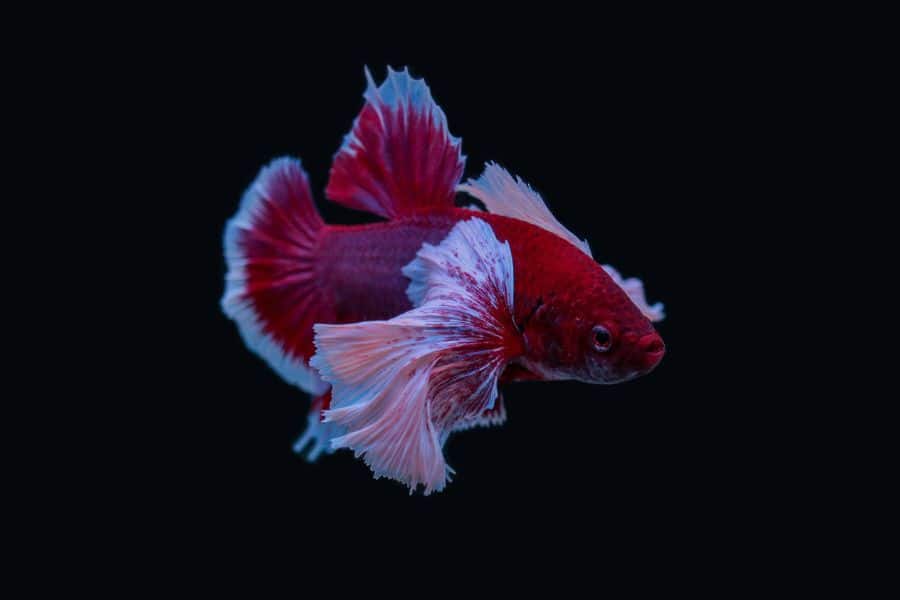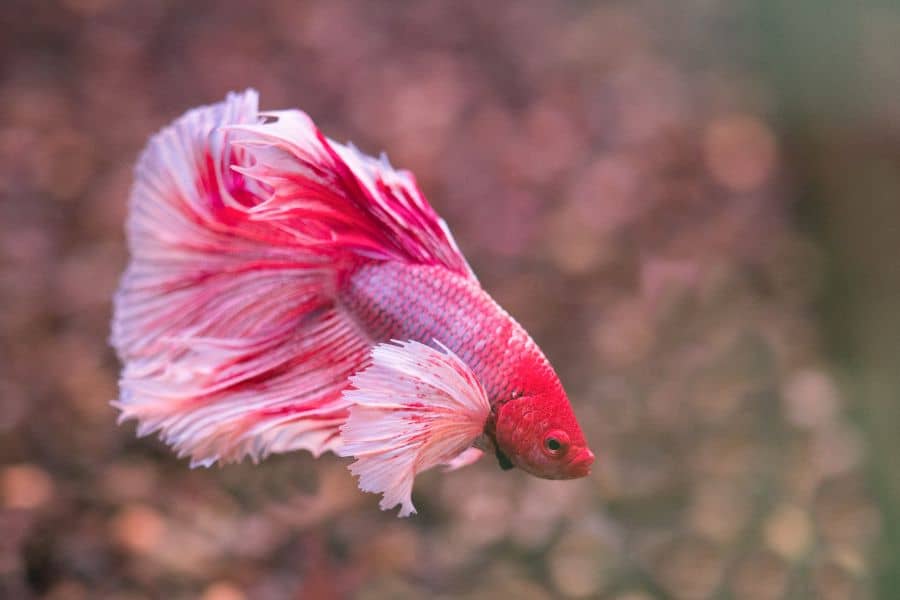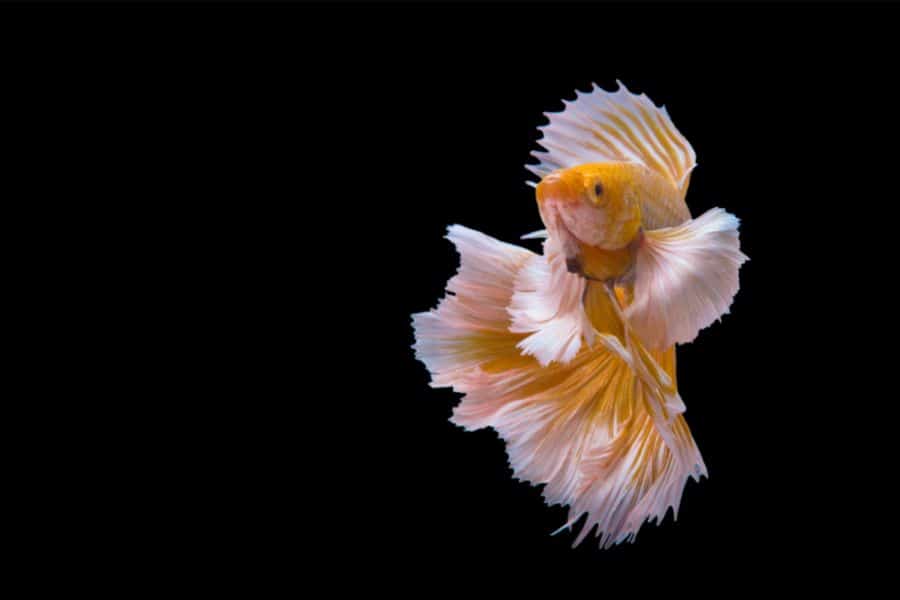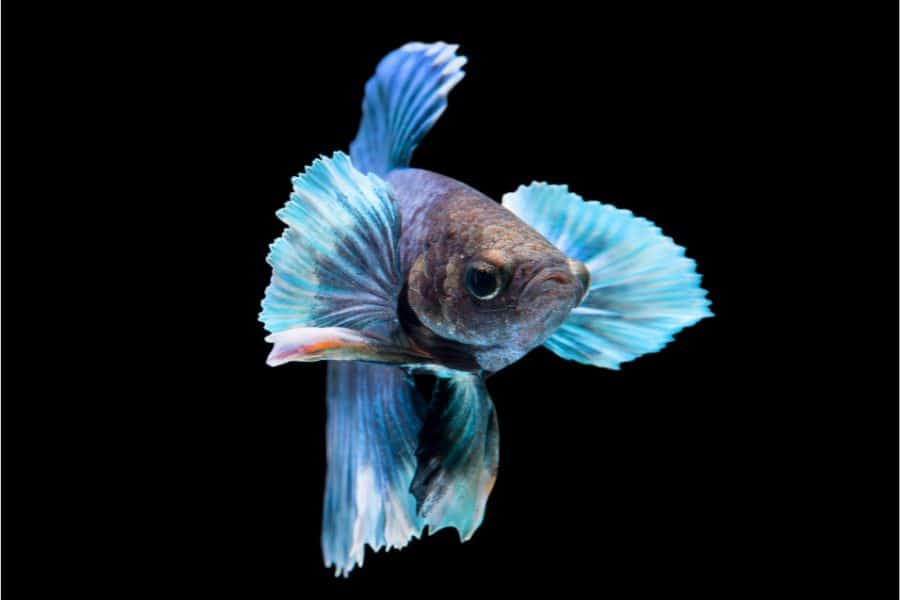Bettas are one of the most well-loved fishes in the aquarium-keeping hobby – and no wonder. They’re interesting, beautiful, and most importantly, there are all kinds of varieties available for everyone.
One of the most popular varieties is the Elephant Ear Betta, a truly unique and beautiful spin on the species’ appearance that appeals to a lot of hobbyists across the world.
But while the Elephant Ear Betta is the same species as the common fancy Betta, there are some things that you have to consider when keeping them.
In this article, we’re going to discuss everything you need to know about keeping Elephant Ear Bettas: what they are, their care, and their breeding.
Elephant Ear Betta Basics
If you want to take care of this Betta species, you’re going to need some facts about their basic care.
| Scientific name | Betta splendens |
| Ease of care | Easy |
| Temperature range | 75 to 82°F (24 to 28°C) |
| Temperament | Aggressive |
| Lifespan | 1 – 5 years on Average |
| Size | Up to 2.5 inches |
| Typical diet | Omnivore, but favors high-protein diet such as blood worms, brine shrimp, and other live food. |
| Minimum tank size | 5 gallons |
| Ideal tank size | 10 gallons |
| Compatibility | Invertebrates (snails, shrimps), peaceful bottom-dwellers (corydoras catfish), fast swimmers (danios, rasboras) |
Elephant Ear Betta Appearance
Betta fishes have been specifically bred to have long, flowing fins. Elephant Ear male Betta takes that to the next level, sporting extra-large pectoral fins that fan out from its body.
This gives the appearance of Elephant Ears, which earns it the name Dumbo Ear Betta, for the Elephant Ear-like pectoral fins, and gives the males of this variety a much more distinctive flaring appearance.
On the other hand, an Elephant Ear female Betta will have a shorter dorsal fin and tail, and a slimmer overall profile. Their ventral fins are shorter and less prominent, as well.
However, both sexes have a body that is typically short and plump, with a wide head and a small mouth.
Like common Bettas, this type can have iridescent scales, sporting a striking range of colors such as blue, red, green, or purple. Some may have stripes, spots, or other patterns on their bodies specifically bred into them.
Some of the most popular varieties of Betta Dumbo Ear are the following.
- Halfmoon Elephant Ear Betta: This type of Betta has large, fan-shaped pectoral fins that extend outwards at almost 180 degrees, creating a stunning display when the fish flares its fins.
- Crowntail Elephant Ear Betta: This variety of Elephant Ear Betta has longer, spikier fins and tails that resemble a crown.
- Rosetail Elephant Ear Betta: This type was specifically bred to emphasize the wrinkles and folds on their fins, making them look like the delicate flowers which are their namesake.
Setting up An Elephant Ear Betta Tank
Elephant Ear Bettas are hardy creatures that can thrive even without constant supervision and tweaks in their conditions, making these fish ideal pets for beginners.
However, there are still things that these fish need to thrive, especially in terms of their tank’s lighting, decorations, filters, heaters, and even tank mates. Let’s find out how you can set up a tank that will make your Elephant Ear Betta happy.
Lighting
Lighting can really change the mood of your tank. Not only will proper lighting let you see your fish properly, but it can also show off its glittering scales, vivid colors, and the beauty of your greenery.
But more than that, it can also play a crucial role in the health of your fish and plants.
Like humans, fishes need to follow the natural cycle of night and day as they do in the wild, and they can get stressed if their environment is too different from nature.
If you have plants in your aquarium, light is all the more important: having consistent lighting enough for their needs will make them grow. Your plants can die without proper lighting, while algae can bloom if there is too much, leaving your Betta swimming in green water.
This is why it’s important that you have beautiful, healthy, and regular lighting for your aquarium. Some examples of high-quality lighting for your aquarium are the following:
- Marineland 32996 LED Aquarium Light
- NICREW ClassicLED Aquarium Light
- Hygger 20W Full Spectrum Aquarium Light
Decor and Plant Choices
For many people, decorating your tank is one of the best parts of the hobby. Not only is this part immensely fun, but it also provides important stimulation for your Elephant Ear Betta.
That said, you do need to have special considerations for Dumbo Ear Bettas.
This kind of Bettas has overly long and delicate fins that can easily get damaged or tangled, so you should take care not to put hardscape with sharp edges. Long, flowing plants can also be particularly difficult to navigate for the fish and can even result in tangling.
Filter
Your aquarium needs an adequate amount of filtration to prevent harmful elements from damaging your delicate ecosystem.
However, when keeping Elephant Ear Bettas, you need to ensure that the kind of filtration your aquarium has doesn’t stress the fish, or doesn’t damage their long dragging fins. This excludes filtration methods that generate strong water flow, such as internal filters or sumps – especially if you have a small aquarium.
Filters that don’t disturb the water that much, such as sponge filters, are ideal.
Heater
Bettas are tropical fishes, and they’re going to suffer if their tank doesn’t have the proper temperature.
Changes in an environment often result in stress, which can then weaken their immune system. One of the most common results of this is fin rot – which Dumbo Ear Bettas are particularly susceptible to since they have such overemphasized fins.
If you live in areas where heaters are necessary, be sure to include this equipment in your setup.
Possible Tankmates
Dumbo Betta fishes need peaceful tank mates that don’t show any interest in them. These species of Bettas can be very vulnerable to fin-nipping fishes because of how cumbersome their fins can be in the water.
Thus, tank mates such as invertebrates, neon tetras, and the like are ideal.
How to Take Care of An Elephant Ear Betta Fish
Elephant Ear Betts have some specific needs separate from other Betta varieties. Here are a few things that you should keep in mind.
Feeding
This variety of Betta should be prioritized when it comes to feeding. Their overflowing fins often slow them down, especially when compared to sleeker fishes.
This means that if you intend to keep a Betta with other peaceful types of fish, you need to specially feed them to ensure that they don’t get outcompeted. You can do this through methods like feeding different types of fish food (sinking pellets vs. floaters like flakes.)
Other than that, ensure that you feed your fish a healthy, varied diet, composed of balanced Betta pellets, live food, and even some greens.
Common Diseases
If you want to keep your Elephant Ear Betta fish healthy, you need to know the most common illness affecting them so that you know how to keep them away from it.
- Fin Rot: Dumbo Bettas are particularly vulnerable to fin rot, a bacterial infection that attacks the fins and tail of the fish and makes them deteriorate and become frayed. Often, the cause of fin rot is environmental.
- Ich: This is a parasitic infection that causes white spots to appear on the fish’s body and fins. Your fish can get ich by close confinement with other infected fish.
- Velvet Disease: Common to all varieties of Bettas, this parasitic infection causes your pet’s skin to appear covered in a velvety coating from fungal outbreaks, which then kills your fish. Poor maintenance and improper quarantine protocols are the most common causes.
Breeding Elephant Ear Betta
While breeding Bettas themselves are relatively easy to do, spawning the Elephant Ear trait is very difficult to do. Elephant Ears are one of the most recessive traits in Bettas, so it only shows up in every couple of fry – even if both parents have Elephant Ears.
This means that breeding Elephant Ears are a long and costly endeavor – although it can be a fun and fulfilling process if you have the capability for it.
Breeding for this trait in your Betta doesn’t differ all that much from breeding typical Bettas, with the following general steps.
- Ensure that your breeding pair are healthy specimens, both with Elephant Ear genes, to increase your chances of success.
- Keep your breeding pair in peak condition by feeding them live food, keeping an optimal environment, etc.
- A well-conditioned breeding tank with no substrate and some hiding places is ideal for spawning your fish.
- Introduce the breeding pair to each other in the tank. Allow the male to get close to the female and release his sperm. The eggs will fall to the bottom, and the male will pick them up in his mouth and transfer them to the bubble nest.
- After spawning, remove the female and any leftover eggs to prevent the male from eating them. The eggs will hatch in 1-3 days, and the fry will start swimming freely after 2-3 days.
Read More:
FAQs
How Do Elephant Ear Betta Fish Differ from Other Betta Fish Varieties?
Elephant Ear Bettas are distinctive because of their overly large dorsal fins, which give them a more elegant and striking appearance.
Is It Easy to Take Care of Elephant Ear Betta?
Yes, Elephant Ear Bettas are easy to take care of, although they do have some considerations which are unique to this particular type of Bettas. Because of their larger dorsal fins, they’re more susceptible to fin nippers, fin rot, and even being outcompeted for food by faster fishes.
Is It Easy to Breed Elephant Ear Betta?
While you can successfully breed Elephant Ear Bettas pretty easily, ensuring that you get the Elephant Ear trait can be very difficult. This is because the Elephant Ear is a recessive gene, which means that it necessarily won’t show after the successful breeding of Elephant Ear pairs.
Everything You Need to Know About Elephant Ear Bettas
Elephant Ear Bettas are one of the most interesting varieties of Bettas that you can find and one of the most difficult to breed. So, you need to ensure that your Betta lives a long and happy life – and you can do this by knowing everything you need to know about this fish variety.
If you’ve reached this far, you should already be well-informed about the basics. All that’s left is to take action!



